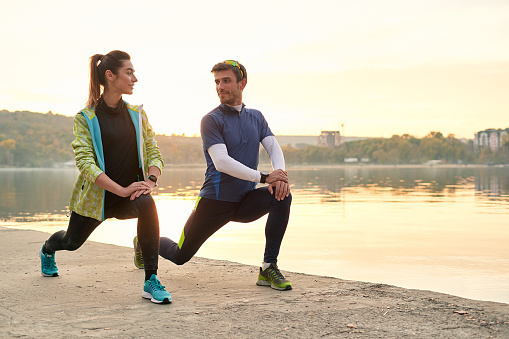Static and dynamic stretching are two elements in a warm-up routine that help prevent injury and maximize performance. But, consider, why do we warm up at all? And, are there other aspects to a good warm-up routine? By performing warm-up routines, you do just that – warm up the body. Internal body temperature can’t raise by a large amount, or you would have all the symptoms of a fever. Nevertheless, the temperature in the muscles can, and should, be raised slightly to dilate blood vessels and loosen muscles.
That dilation leads to greater blood flow, which helps oxygenate muscles and remove the waste products of cellular activity. Warm muscles are looser, more supple, and more flexible. That reduces stiffness and lowers resistance to larger movements. That helps reduce the risk of injury and prepares the body for high-performance activity.
A good warm-up also raises the heart rate, respiratory capacity, and overall metabolic level. Among other benefits, this helps deliver nutrients to muscles that will be useful for the workout to come. Warm-ups help lubricate joints, too, as well as lowering the risk of stretched tendons and tears.
No matter what kind of sport or workout you favor, having a well-functioning cardiovascular system and supple joints and muscles are essential for peak performance and low risk of injury. A 10-15 minute warm-up period, including static and dynamic stretching activities, should be a low-intensity version of the routines that will be undertaken when the warm-up is complete.
Focus the non-stretching aspect of your warm-up more on the specific types of a movement called for by the sport or activity you plan to engage in. If you plan to jog five miles, take a brisk walk, followed by a few gentle laps of a hundred yards or less. If you plan to play tennis or golf, spend a few minutes on low-speed, low-impact swings.
As you progress through the warm-up, gradually increase the speed and range of movement. This helps prepare the body and mind both. Making the increase gradual helps increase the cardio and lung systems, and slowly cranks up needed body chemicals systems without depleting them. It helps gear up the mind for a high-performance routine or sports event, in a way that static or even dynamic stretches won’t. Like any physical activity, don’t overdo it. Don’t warm up too much or too fast. The idea is to prepare the body for a workout, not perform one.

